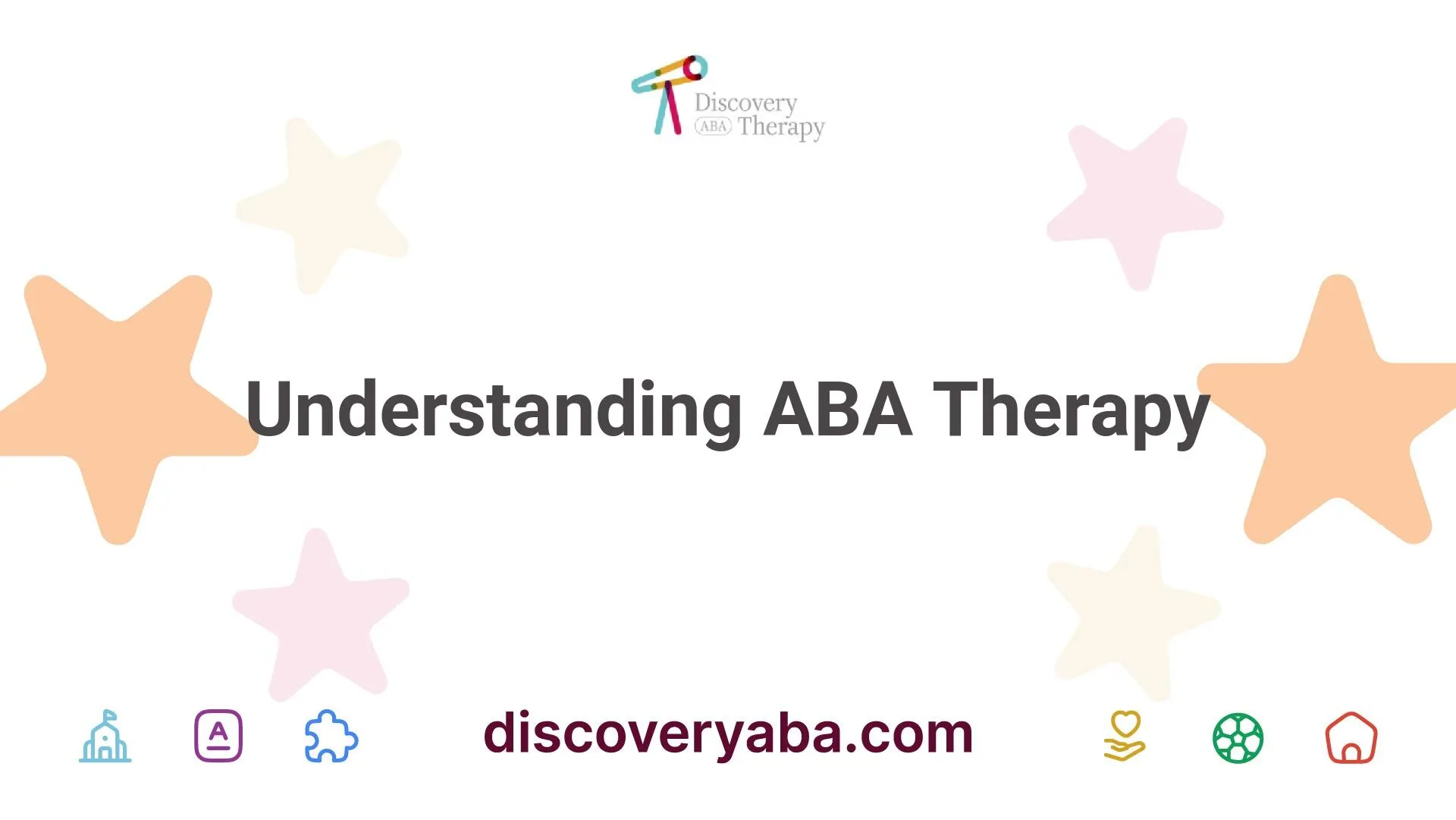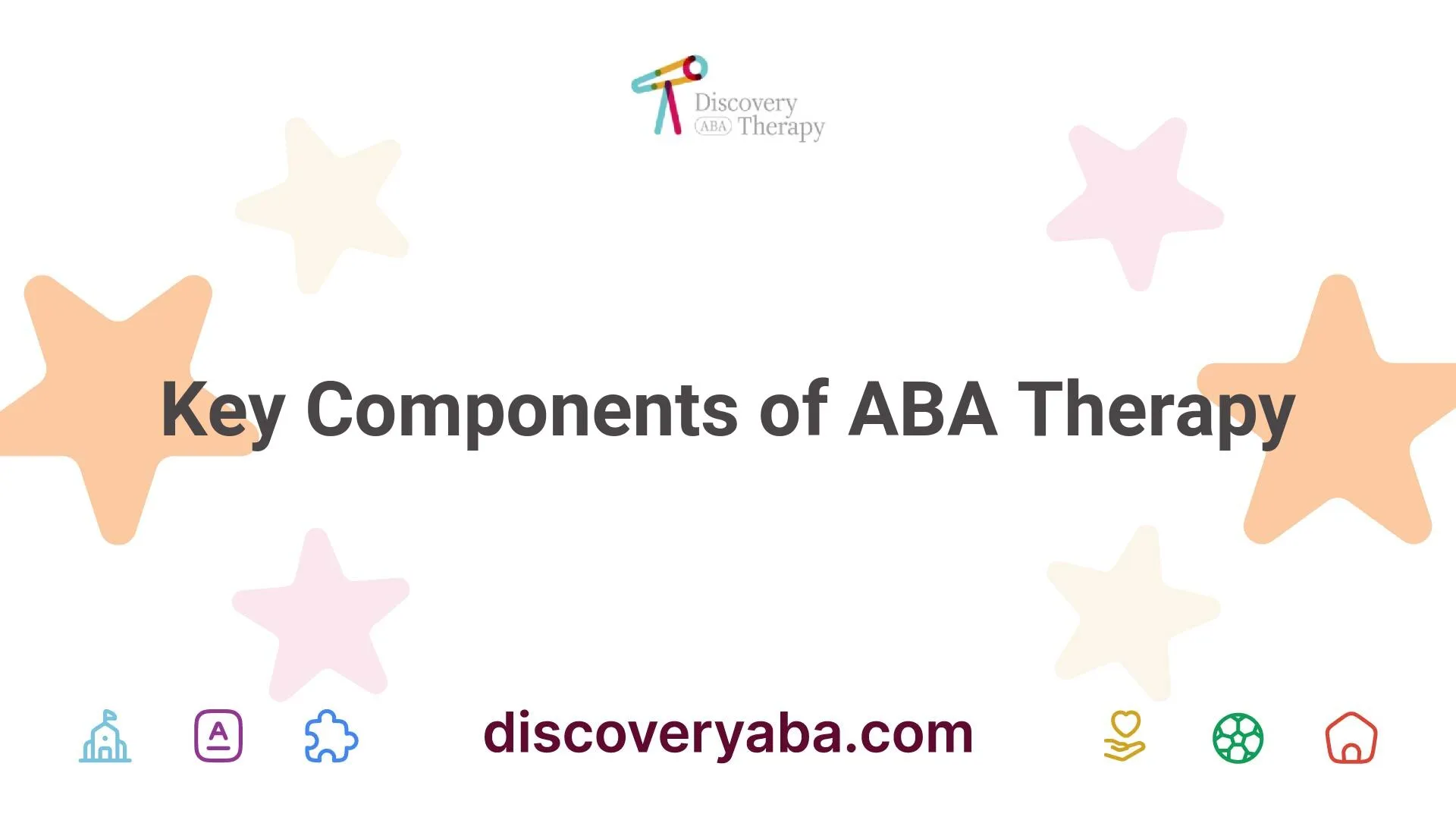Strategies for Self-Esteem with ABA
Discover strategies for addressing self-esteem with ABA therapy and build self-confidence effectively.


Understanding ABA Therapy
Applied Behavior Analysis (ABA) is a therapeutic approach that utilizes principles of learning theory to bring about meaningful and positive changes in behavior. It is particularly effective for individuals with autism, focusing on improving various skills and behaviors essential for everyday life.
Impact of ABA Therapy
Numerous studies have established the effectiveness of ABA therapy for individuals on the autism spectrum. More than 20 studies demonstrate that intensive and long-term therapy using ABA principles can lead to significant improvements in intellectual functioning, language development, daily living skills, and social functioning [1].
Key findings from a meta-analysis involving 14 randomized control trials with 555 participants reveal an overall standardized mean difference of d=-0.36 for general symptoms of autism and a substantial impact on expressive language (d=-3.52) [2].
One of the crucial techniques in ABA therapy is positive reinforcement, where the child receives a reward for completing tasks correctly or achieving targeted behaviors. This method instills desired behaviors, helping children understand social scenarios and differentiate between acceptable and unacceptable actions.
Additionally, longitudinal studies indicate that ABA therapy significantly improves social skills, including social communication, social initiation, peer interactions, and overall social competence. The effects are often sustained, enhancing an individual's quality of life.
Qualifications of BCBA
Board Certified Behavior Analysts (BCBA) are professionals who provide ABA therapy. They possess specialized training and certification in behavior analysis, which equips them to assess, implement, and evaluate ABA programs effectively.
To become a BCBA, an individual must meet several qualifications:
RequirementDescriptionEducationA master's degree in behavior analysis, psychology, or a related field.Supervised ExperienceA minimum of 1,500 hours of supervised practice under a qualified BCBA.ExaminationSuccessful completion of the BCBA certification examination.Continuing EducationOngoing professional development to maintain certification and stay updated with best practices.
BCBAs play a critical role in designing individualized programs for clients, ensuring that therapeutic interventions are tailored to address specific needs aba for emotional dysregulation in autism. Their expertise is vital in measuring progress and making necessary adjustments to enhance the effectiveness of therapy.

Key Components of ABA Therapy
In the realm of addressing self-esteem with ABA, understanding the key components of Applied Behavior Analysis (ABA) therapy is essential. Two fundamental aspects of ABA therapy are its structured approach and the role of the behavior analyst.
Structured Approach
ABA therapy employs a structured methodology designed to teach useful skills for everyday life while also reducing behaviors that may impede learning or social interactions. This structured approach significantly benefits individuals with autism, enabling them to lead more fulfilling lives. According to Dream Big Children, the structured environment provides a clear framework that facilitates learning and skill development.
Key Features of Structured ApproachBenefitsSkill DevelopmentTeaches essential life and social skillsBehavioral ReductionMinimizes disruptive behaviors affecting learningConsistencyOffers predictable routines that enhance comfort and stability
ABA techniques primarily focus on positive reinforcement. When a child demonstrates a useful skill or engages in socially appropriate behavior, they receive rewards or praise. This reinforcement is crucial for instilling desired behaviors, as highlighted by WebMD. The structured setting also encourages the celebration of small successes, which aids in boosting self-esteem and overall confidence.
Behavior Analyst Role
The behavior analyst plays a key role in the effective application of ABA therapy. Trained professionals, known as Board Certified Behavior Analysts (BCBAs), oversee the implementation of individualized treatment plans tailored to each person's unique needs. They assess behaviors, develop strategies, and track progress to ensure the effectiveness of the therapy.
Responsibilities of a Behavior Analyst include:
The collaborative effort between behavior analysts, families, and educators is essential to promote the generalization of newly acquired social skills across different contexts, as noted by Double Care ABA. This teamwork ensures that individuals can consistently apply their skills, ultimately fostering confidence and a sense of belonging within peer groups.
The structured approach and the dedicated role of behavior analysts together form the backbone of effective ABA therapy, contributing to the overall development of self-esteem in individuals with autism. For more insights into specific techniques within ABA therapy, consider exploring our articles on aba for adolescents with conduct disorders and aba for emotional dysregulation in autism.
Techniques in ABA Therapy
Applied Behavior Analysis (ABA) therapy incorporates various techniques aimed at addressing self-esteem with ABA among individuals with autism. Two key techniques utilized in this approach are positive reinforcement and setting measurable objectives.
Positive Reinforcement
Positive reinforcement is a fundamental principle of ABA therapy. It involves rewarding individuals during sessions for demonstrating desired behaviors or achieving milestones. By doing so, it motivates them to engage in those behaviors again in the future [5]. This technique is critical in increasing socially significant behaviors, such as adapting communication skills and self-help skills.
When a specific behavior is followed by the addition of an item or stimulus—like praise, a token, or a preferred activity—the likelihood of that behavior occurring again is enhanced. For individuals on the autism spectrum, receiving rewards for completing tasks correctly or reaching goals serves to instill desired behaviors effectively. This approach not only improves behavior but also reinforces positive social interactions and enjoyable learning experiences, contributing to increased self-esteem and confidence in those undergoing therapy [1].
BehaviorRewardFrequency of BehaviorAsking for helpPraiseIncreasedSharing toysTokenIncreasedFollowing instructionsPreferred activityIncreased
Setting Measurable Objectives
Setting measurable objectives is another essential technique within ABA therapy. This involves establishing specific, quantifiable goals that indicate progress and success in the individual’s development. Measurable objectives help track the effectiveness of interventions, allowing both the therapist and the individual to see what is working and what may need adjustment.
Creating clear and attainable goals provides structure and a sense of direction during therapy sessions. For instance, rather than stating a goal as "improve social skills," a more measurable objective might be "engage in three conversations with peers during the session." This objective allows for tracking progress and ensuring that the individual is moving toward their targets.
Utilizing specific metrics, such as frequency counts or percentage increases in desired behaviors, helps to solidify the effectiveness of the therapy approach being used. By continuously adjusting these objectives based on data collected, the therapy can evolve to meet the ongoing needs of the individual effectively.
ObjectiveMeasurementTargetEngage in conversationsFrequency count3 per sessionCompletes self-help tasks independentlyPercentage80% of tasksParticipates in group activitiesFrequency count5 times a week
These techniques form the backbone of addressing self-esteem with ABA and aid in fostering positive development and emotional growth. For additional insights on emotional and behavioral strategies, consider exploring aba for emotional dysregulation in autism or improving classroom behavior with aba.
ABA Therapy Sessions
ABA therapy sessions are crucial in addressing self-esteem with ABA by providing a structured framework for individuals with autism to learn and grow in a supportive environment.
Structured Environment
A key feature of ABA therapy sessions is the structured and predictable environment in which they take place. This setting is essential for creating a sense of safety and routine, allowing individuals to focus on learning new skills and behaviors. The use of consistency and repetition helps individuals generalize skills across different settings and situations [5].
Session ElementsDescriptionEnvironmentPredictable and safeStructureConsistent routinesFocusSkill development and learning
Utilized Techniques
During ABA therapy sessions, several techniques are implemented to maximize effectiveness. Some of these techniques include prompting, shaping, and positive reinforcement.
Utilization of these techniques ensures that each session addresses the individual's unique needs while providing opportunities for skill growth and confidence building.
Ongoing data collection and analysis also plays a vital role in assessing progress and tailoring interventions. Collecting this data enables behavior analysts to evaluate the effectiveness of interventions and make necessary adjustments to the therapy plan, ensuring continued success for individuals with autism.
Through these structured sessions and effective techniques, ABA therapy can significantly contribute to improving self-esteem and overall quality of life for individuals with autism.
Customized ABA Programs
Customized Applied Behavior Analysis (ABA) programs play a significant role in addressing self-esteem in individuals with autism. These programs are designed to be flexible and tailored to each person’s unique needs, ensuring effective interventions that enhance self-confidence and overall well-being.
Tailored Interventions
A qualified behavior analyst is responsible for designing and overseeing each ABA program, ensuring that the interventions are personalized to meet the needs, skills, interests, and preferences of the individual learner. This tailored approach is essential for effectively addressing self-esteem issues, providing a supportive and encouraging environment conducive to growth.
The interventions may include various methods such as self-management techniques, skills training, and social skills development. Here is a summary of common tailored interventions that might be used in a customized ABA program:
Intervention TypeDescriptionSelf-Management TechniquesThese strategies promote self-monitoring and goal setting to foster independence and confidence. While individuals set personal objectives, they learn to evaluate their progress continuously. Science in Autism TreatmentSkills TrainingFocused on building essential life skills, including communication, social, and daily living skills, to empower individuals with autism and enhance their self-esteem.Social Skills DevelopmentEngaging individuals in social situations to help them practice newly acquired skills, promoting generalization across various contexts. Double Care ABA
Individualized Goals
Individualized goals are a critical aspect of customized ABA programs. These goals are set based on the specific challenges faced by the individual, taking into account their age and ability level. The comprehensive nature of these goals covers various skill areas, including:
By focusing on multiple skill areas, these programs showcase a well-rounded approach to addressing self-esteem through skill-building. Each goal is designed to be achievable and measurable, allowing gradual progress that boosts confidence over time. As the individual meets these goals, they gain a sense of accomplishment that contributes to improved self-worth and social engagement.
In conclusion, through tailored interventions and individualized goals, customized ABA programs serve as a valuable resource for individuals with autism, promoting self-esteem and enhancing their quality of life. For more details on specific interventions, you can explore our articles on aba for adolescents with conduct disorders and aba for emotional dysregulation in autism.
Tracking Progress in ABA Therapy
Monitoring the progress of individuals undergoing ABA therapy is crucial to ensure that the interventions are effective and tailored to their needs. This encompasses both data collection and analysis, as well as the adjustment of the therapy plan based on the results observed.
Data Collection and Analysis
Data collection is a fundamental aspect of ABA therapy. It involves ongoing assessment of an individual's behavior and learning progress throughout the therapy process. This data helps behavior analysts track progress, evaluate intervention effectiveness, identify patterns, measure goal achievement, and make informed decisions regarding necessary adjustments to the therapy plan. According to Dream Big Children, continuous data collection enables behavior analysts to ensure continued success for individuals with autism.
Type of DataPurposeBehavioral ObservationsTrack changes in specific behaviors over timeSkill AcquisitionMeasure proficiency in targeted skills and goalsEnvironmental FactorsAssess how different settings impact behavior and learning
Data-driven insights enable therapists to understand the individual’s learning trajectory and adjust interventions as needed. Regular reviews of this data inform therapy strategies that promote independence and success both now and in the future.
Adjustment of Therapy Plan
Adjusting the therapy plan based on collected data is vital for ensuring that interventions remain effective and responsive to the changing needs of the individual. This aspect of ABA therapy involves regular evaluation of goals, and modifications to teaching strategies if necessary. As stated by Double Care ABA, such adjustments help promote the generalization and maintenance of newly acquired skills across various settings and contexts.
The adjustment process may include:
Regular collaboration with families, educators, and caregivers ensures that new behaviors are practiced and maintained in real-life scenarios, increasing the likelihood of lasting change. This systematic approach is beneficial in addressing self-esteem with ABA, as it fosters a supportive environment for personal growth and self-confidence development.
Through consistent data collection and thoughtful adjustments, ABA therapy can effectively elevate self-esteem for individuals with autism, helping them achieve their personal goals and improve their overall quality of life.
References
[2]:
[3]:
[4]:
[5]:
[6]:
Does Your Child Have An Autism Diagnosis?
Learn More About How ABA Therapy Can Help
Find More Articles
Contact us
North Carolina, Nevada, Utah, Virginia
New Hampshire, Maine
Arizona, Colorado, Georgia, New Mexico, Oklahoma, Texas
.avif)














































































%2520(1).jpeg)














